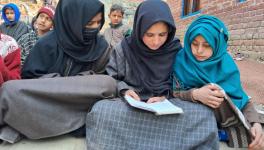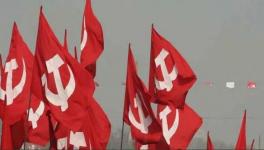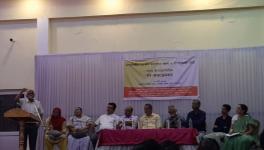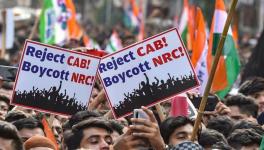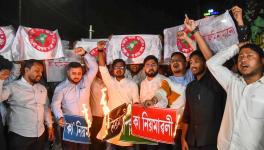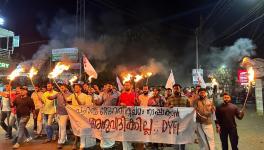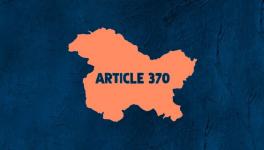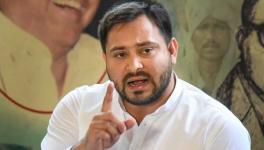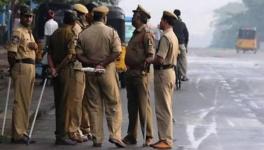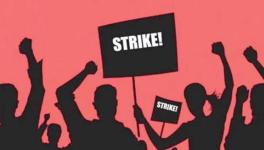CAA, NRC Protests: Never Too Late to Do the Right Thing
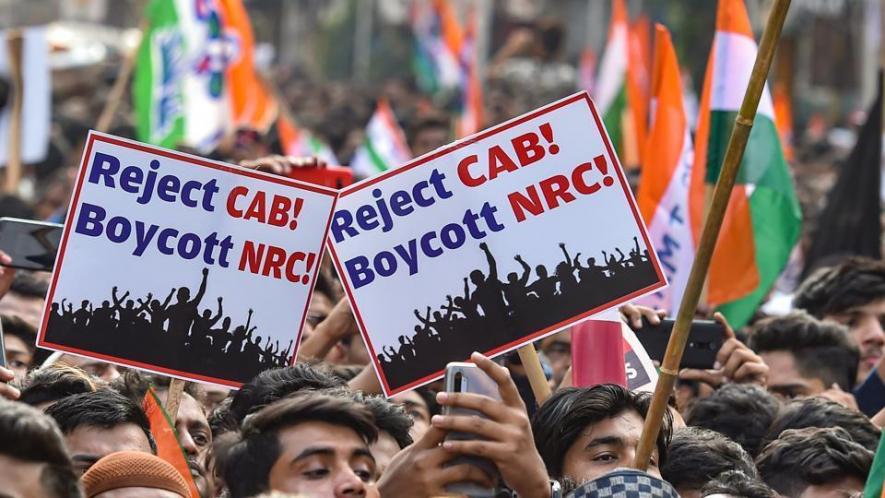
Image Courtesy: Hindustan Times
When a Prime Minister is parsimonious with the truth on a matter that has split the country, when he singles out a people, who are to be identified by “their clothes”, when he preaches about the rights and duties of citizens while being unmindful of his own responsibility to take everyone along, and when he speaks out, unequivocally, in support of the police force, without even a word of disapproval for their lawless acts, then we know that we are near a ripe stage of authoritarian rule.
What the PM has said amounts to a pat on the back for a police force which entered university hostels, the library and even toilets to chase students, which entered mohallas and residences of Muslims in Uttar Pradesh, where it spared neither the young nor the old. Police firing may have caused 17 deaths, caused injuries from grievous to minor, and the police have arrested 879 persons, detained 5,312 and filed 164 cases. These are official handout, the real figures of death, destruction and detentions could be much higher, because under Bhartiya Janata Party (BJP) rule fudging of official data has become favourite past-time. Above all, the PM remained indifferent to the deep concerns and anxieties voiced by citizens across the country. And he remained glued to his parochial discourse.
The endorsement of the actions of the police by the BJP-led central government, even in face of incontrovertible evidence of their brutality and highhandedness, reminds me of how successive governments lent unconditional support to armed forces of the union in India’s war-zones. This worked both to praise them for their repressive action which coercively pacifies people, and as well it is meant to boost their morale by invoking “human rights of soldiers”. Thereby, the fundamental fact that security forces (or for that matter the police) enjoy the authority to enforce law and wield the power of life and death over unarmed civilians in “disturbed” areas is deliberately suppressed. Damage caused by their actions, precisely because they carry authority, makes their criminal acts that much worse.
Just because the PM stoops to misrepresent actual conditions does not mean that the Indian public remain indifferent. Because once citizenship and the Constitution become the collective symbols around which most protests coalesce, then as the government aims low, the protesters ought to do the opposite.
Kashmir is nearing 150 days of captivity, accompanied with communication and news lock-down. The harshest period of winter has come with severe power shortages and frozen water pipes. The arrests and detentions, including of children, did not bring out as many people in India out on streets, although it too was an outrageous attack on the Constitution and its very foundation of citizenship which guarantee the life and liberty of each one of us.
If, in theaters of war, a divide is presented as one between a “nation” and the separatists, across Uttar Pradesh and in Mangalore, Karnataka, the majoritarian narrative has been employed to create a divide between the “nation” and its adversary who is to be identified by his or her “clothes”, the rioters. In both instances, the matter that triggered protests is sought to be countered by fusillade of misrepresented facts.
However, now that people have come out in defense of the Constitution and each and everyone of us as a citizen of a democratic republic, hopes rise that perhaps now we will also make Kashmir a part of our narrative and demand restoration of their life of dignity and liberty.
There is another pressing reason why Kashmir should enter the narrative, just as Assam and entire North-east must. That has do with how, in the BJP-ruled states of Uttar Pradesh and Karnataka, one can see police use tactics perfected by the security forces in “theaters of war” inside India over several decades. What distinguishes the use of coercive force in theaters of war from police action in “peace zones” was marked by employment of cruelty with which authorities deal with any situation.
So in UP and Mangalore the divide between war zone and peace zone stands blurred.
In Haryana, during the so-called “Jat andolan” of February 2016, the police, the Army and the para-military forces dealt with vandalising mobs gently and generously, to the point of abdicating their responsibility. The Indian PM then, in his characteristic style, remained mute throughout that event.
Yet, the same government and its officials are now pushing a “national security”-driven justification, almost in a doctrinaire fashion, as they ride roughshod over the Constitution and established principles of democratic governance. Therefore, instead of improving transparency and accountability, the BJP government has perfected the craft of deception and diversion. We have come to expect them to lie brazenly and deny their acts and deeds, confident that the corporate media is there to peddle their line. One can only rue the fact that we probably have the world’s largest number of government leaders who are practitioners of dissimulation. As a result, the rank and file in civil and police administration seem to be following their lead, and are acting malevolently and then claiming they never did.
Look closely at Mangalore, where the police openly fired and entered a hospital and fired tear gas shells, or how in UP the police and civil administration unleashed forces to enter homes and attack unarmed civilians. Attack on medical practitioners and denying medical assistance to victims of injury is also normal. In theaters of war, police firing on unarmed protesters was a common occurrence. Indeed so glaring was it that even a former chief minister of Jammu and Kashmir wondered how come police in Kashmir opens fire to kill but not in the rest of India. Well, that was 2008.
The propensity to open fire to kill has spread to Mangalore and UP where the death toll has risen to 20. When an eight-year-old child was trampled to death, a police officer, when asked about it, brushed it aside saying “these things happen”. It is reminiscent of what a former Commissioner of Delhi said about protesters against the Nirbhaya rape and murder protesters who were assaulted by the police in 2012. He had then described it as “collateral damage”. In 2019, Delhi Police entered the hostel, library and toilets of Jamia Millia Islamia University, chasing and attacking students.
It appears that the use of excessive or disproportionate force has become routine under the BJP government. Recall the moment in 2016 when India’s Army Chief came out in support of his officer who used a human shield—a war crime under international humanitarian laws, and praised it for being an “innovative” act.
As a result, the values and principles of a democratic republican Constitution are being sacrificed, one by one, at the altar of “national security” by the government and its officials. UP under BJP rule stands out in particular as one of the most violent states with a record of systematic persecution of Muslims, Dalits and Adivasis, and where police sings paens to “encounters” and considers every opponent of the state government an adversary to be cowed down. Look at how they virtually rioted inside the Aligarh Muslim University when the vice chancellor buckled under police threat and allowed them to enter the premises.
The UP police then entered hostels and carried out destruction of student’s properties. Such acts of vandalism were also carried out in Bijnor, Muzaffarnagar, and other places.
Consider another feature. Section 144 of the Criminal Procedure Code, a relic of India’s colonial past which was introduced in the 1860s, is beloved of police across Indian, and especially in war zones. In Kashmir, section 144 is a de facto permanent feature. That this provision remains on the statute is an anomaly for a democratic republic. All the more because the the likelihood of violence increases after section 144 has been imposed, simply because the presence of four or more persons become an offence and the police, ostensibly, is within its powers to assault protesters or use other measures including large-scale detentions and arrests against them.
Another feature is the internet lock-down and the obstruction to movement ordered by the Delhi police, which gets the Delhi Metro closed off at a drop of a hat, as though they own and operate the metro, which is meant for Delhi’s commuters.
It is when protests and rallies are permitted that the chances of violence recede. This is for the simple reason that once section 144 is imposed, preventing people from coming out to vent their resentment and anger, say, against as fundamental an issue as citizenship, then there is bound to be defiance to it. Authorities forgot that the Citizenship Amendment Act, the National Register of Citizens and the National Population Register touch each and every one of us. If they remain oblivious to this and confined to their echo-chambers, it also shows their gross miscalculation if not mis-judgment of the situation.
That India’s rulers continue to lie from public platforms, including the floor of the Houses of Parliament, and the police and civil and administration defends itself by dismissing all criticism as lies, reveals that the police force which served the colonial master by tyrannising Indian people is making a comeback. The return of police and administration in that avatar also shows how “Azaadi” is a term of abuse to ears of India’s rulers today—as it was for the British Raj.
In short, if India proceeds towards turning Kashmir into its internal colony then the lessons India’s rulers learn in the “colony” will be employed against the rest of us too. The use of tear gas shells and pellet guns to blind and maim civilian protesters is spreading although, right now, it is avoided in metropolitan towns because of possible domestic and international repercussions. Nevertheless, by defying section 144 and through persistent assertion of their right to peaceful assembly, protesters have retrieved some ground. It also affirms that unjust laws and draconian acts passed by the government will be resisted.
Therefore, there is all the more reason to extend our solidarity with those who have been silenced through use of brutal military force. The responsibility falls on our shoulders to become the voice of those who have been silenced and make it part of the larger narrative unfolding from the streets about citizenship, the Constitution and ‘Azaadi’.
Put another way, if a movement has to grow from here on then the demand for inclusive citizenship and upholding the Constitution must be infused and filled with values of solidarity and struggle.
Get the latest reports & analysis with people's perspective on Protests, movements & deep analytical videos, discussions of the current affairs in your Telegram app. Subscribe to NewsClick's Telegram channel & get Real-Time updates on stories, as they get published on our website.









